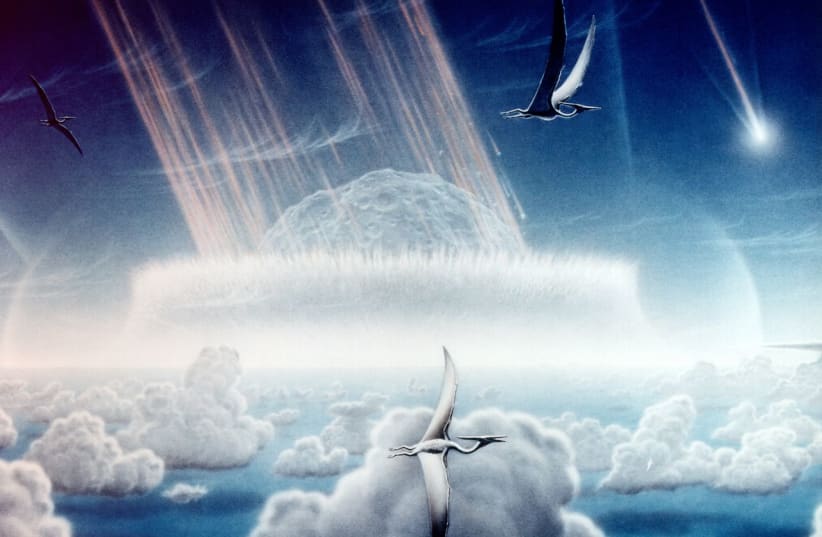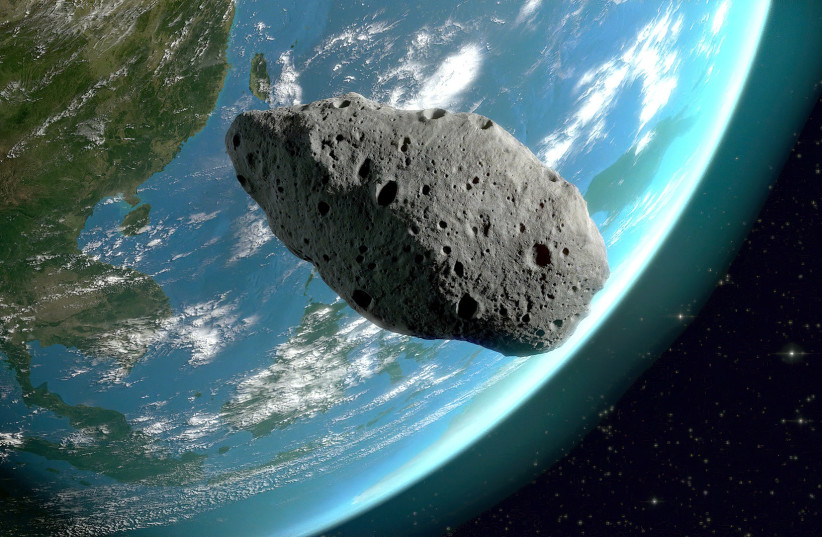Massive asteroids that have impacted the Earth in the past million years may have had a far more devastating effect on the planet than previously realized, according to a new study.
The research, led by NASA's Goddard Space Flight Center chief scientist James Garvin, has not yet been peer-reviewed, but it was presented at NASA's 54th annual Lunar and Planetary Science Conference.
The study's findings could shed light on the unknown extent of the sheer destruction and devastation asteroid impacts have caused on Earth in the past.
Asteroid impacts: How bad could it be?
To put it simply, asteroid impacts are quite possibly the single worst possible natural disaster that could occur. While the sizes of asteroids vary widlly throughout space, the consequences of a very large asteroid impact on Earth range from destructive to apocalyptic.
According to research from the Davidson Institute of Science, the educational arm of Israel's Weizmann Institute of Science, an asteroid 140 meters in diameter or more would release an amount of energy at least a thousand times greater than that released by the first atomic bomb if it impacted Earth.
An even larger asteroid that's over 300 meters wide – like the Apophis asteroid – could destroy an entire continent. An asteroid over a kilometer in width – like asteroid 138971 (2001 CB21), which passed the Earth in early March 2022 – could trigger a worldwide cataclysm.
But asteroids can be larger than just a kilometer.
Consider the Chicxulub asteroid impact, the event that wiped out the dinosaurs. Here, a monumentally large asteroid thought to be between 10-15 kilometers wide crashed into the Earth in what is now Mexico's Yucatan peninsula. This resulted in the creation of a crater 180 kilometers wide and 20 kilometers deep.
This is one of the single largest confirmed asteroid impact craters anywhere on Earth, possibly dwarfed only by the 300-kilometer-wide Vredefort impact crater in South Africa, and is one of the largest and most devastating asteroid impacts to ever happen on the Earth.
Other asteroid impacts have happened on Earth before. Some were devastating impacts, such as the Tunguska event in 1908, while others caused no damage, like when 2022 EB5 crashed into the Earth in March 2022. But the Chicxulub asteroid impact that killed the dinosaurs was thought to be an isolated and significant event. A lone asteroid caused an extinction event.
Other asteroids that are smaller tend to be weaker. It is extremely rare for an asteroid like the Chicxulub asteroid to hit the Earth and happens around once every 100 million years. Impacts from kilometer-wide asteroids are more frequent and can happen every 600,000 years or so, which can cause severe famine and other global calamities.
But these asteroids may not have been as comparatively weak as we previously thought.
How do we know this?
The key to this all lies in the impact craters. Large enough asteroid impacts always leave craters – they are essentially scars left by Earth's encounters with space rocks.
In other words, the larger the asteroid, the larger the crater.
Of the many asteroid craters that dot the Earth, scientists have a very good idea of how big they are – from which we can therefore infer how big the asteroid was and how devastating the impact must have been.
At least, we thought they did. Because this new study threatens to upend quite a bit of our previous understandings.
Simply put, these asteroid craters may be considerably bigger than we realized, sometimes tens of kilometers larger.
The researchers behind this study used new high-resolution satellite images to look at some of the largest impact craters formed within the last 1 million years.
Specifically, they took a look at a few specific craters, and the result was that each of them was tens of kilometers wider than it should have been.
Take Pantasma, for example. This 14.8-kilometer-wide 800,000-year-old asteroid crater is well understood. Except it isn't, because the researchers determined it was actually 35.2 kilometers wide.
Each of these impacts would have been large enough to completely blow away chunks of the atmosphere and cause major catastrophes, with one of these asteroids, the Zhamisnshin crater in Kazakhstan, possibly causing a global climate shift.
At least, that would be the case if the study's results were certain. However, barring peer review, that can't be determined just yet.
Certainly, there are already some scientists speaking out against it. According to an article in the academic journal Science, Purdue University planetary scientist Brandon Johnson argued that these further wide rims of the craters might not actually be part of the crater, but could, in fact, just be debris that ended up there when the asteroids impacted. The climate shifts caused by the impacts should also have marks in sediments, but we haven't seen that yet.
For his part, the study's lead researcher points out that if the crater's outer rim was just debris, it shouldn't still be there after a million years.
These are all things that further research may one day figure out, but for now, the question is still up in the air – or rather, impacted into the dirt.

